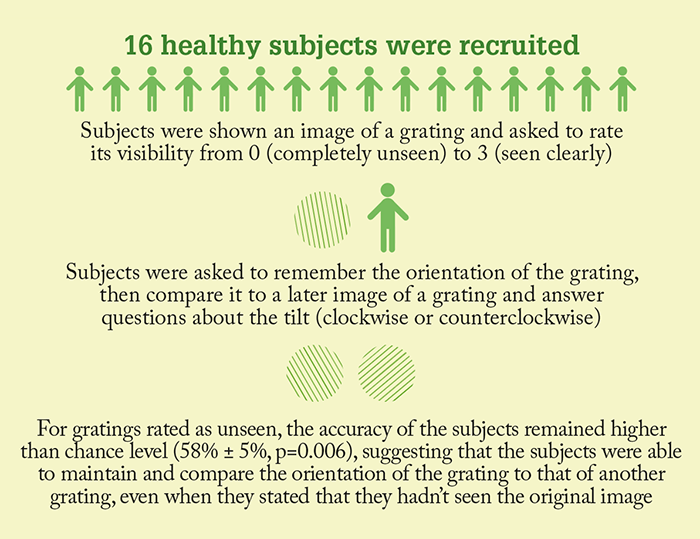
To remember something, do you need to consciously see it? The belief in a strong link between something being visible to the eye, and the maintenance of corresponding neuronal activity is supported by several theories of visual awareness. But recent work is challenging this notion: it would appear that things that seem “invisible” to the naked eye can still be stored by the brain.
A group of researchers used magnetoencephalography (MEG) to monitor 16 healthy adult subjects while they were being shown patterns of lines that quickly appeared and disappeared on a screen (Figure 1). The subjects were then asked questions about the visibility and orientation of the images – meanwhile MEG was being used to measure the magnetic fields created by their brain activity.
The answers given by the study participants showed that stimuli reported as “unseen” were actually remembered by the brain. How? When the participants answered questions about images that they said they didn’t detect, they managed to perform better than if they were answering at random (1). The MEG data provided even more interesting results: neuronal activity elicited by the images (even those only on screen for around 150 ms) moved from the primary visual cortex to high visual regions, ending up at the parietal and frontal cortex, suggesting the information was briefly maintained. “Undoubtedly, these results suggest that our current understanding of the neural mechanisms of conscious perception may need to be revised,” says Jean-Rémi King, co-first author of the paper.
References
- JR King et al., “Brain mechanisms underlying the brief maintenance of seen and unseen sensory information”, Neuron, 92, 1122–1134 (2016). PMID: 27930903.
